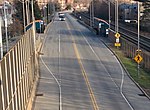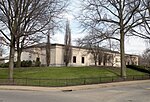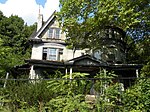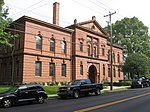Homewood Branch of the Carnegie Library of Pittsburgh
1910 establishments in PennsylvaniaBuildings and structures in PittsburghCarnegie libraries in PennsylvaniaCity of Pittsburgh historic designationsLibraries in Allegheny County, Pennsylvania ... and 3 more
Library buildings completed in 1910Pittsburgh History & Landmarks Foundation Historic LandmarksPittsburgh building and structure stubs

The Homewood Branch of the Carnegie Library of Pittsburgh is a library in Pittsburgh, Pennsylvania. It is located at 7101 Hamilton Avenue in the Homewood South neighborhood and opened on March 10, 1910. It was designed by the architectural firm Alden & Harlow (architect Howard K. Jones was working for the firm at the time), and it was added to the List of City of Pittsburgh historic designations on July 28, 2004, and the List of Pittsburgh History and Landmarks Foundation Historic Landmarks in 2004. This library was featured in an episode of Mister Rogers' Neighborhood.
Excerpt from the Wikipedia article Homewood Branch of the Carnegie Library of Pittsburgh (License: CC BY-SA 3.0, Authors, Images).Homewood Branch of the Carnegie Library of Pittsburgh
Hamilton Avenue, Pittsburgh
Geographical coordinates (GPS) Address External links Nearby Places Show on map
Geographical coordinates (GPS)
| Latitude | Longitude |
|---|---|
| N 40.455233333333 ° | E -79.899213888889 ° |
Address
Carnegie Library of Pittsburgh - Homewood
Hamilton Avenue 7101
15208 Pittsburgh
Pennsylvania, United States
Open on Google Maps









